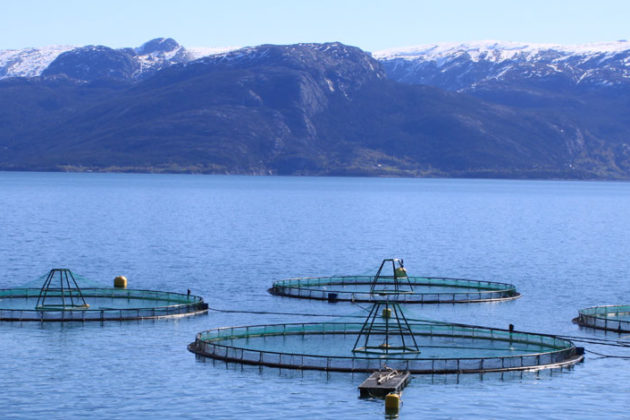English version of the FISHWELL Atlantic salmon welfare handbook

The Norwegian version of the FISHWELL handbook on welfare indicators for Atlantic salmon was first available. The handbook is now also available in English.
The English version is called ”Welfare Indicators for farmed Atlantic salmon – tools for assessing fish welfare” and is released as a 351 page PDF.
The handbook is a collaboration between fish welfare researchers and veterinarians at the food research institute Nofima, the Institute of Marine Research (IMR), the Norwegian Veterinary Institute (NVI), Nord University (all of whom are based in Norway) and the University of Stirling in the UK.
“The goals of the project were to provide the industry and other interested stakeholders with a handbook on the correct fit-for-purpose indicators for assessing farmed salmon welfare across different rearing systems, routines and operations. Essentially, it is a science based toolbox where we outline the list of welfare indicators we currently have, evaluate their operational feasibility, and match them to specific production systems or tasks” says scientist Chris Noble of Nofima, project leader and one of the editors of the handbook.
Three parts
The handbook is split into three parts. Part A provides the reader with an updated scientific state of the art on the welfare of Atlantic salmon, in relation to its welfare needs at different lifestages, Part B is a user guide on fit-for-purpose Operational Welfare Indicators and Laboratory based Welfare Indicators for assessing fish welfare in a range of different production systems and Part C outlines fit-for-purpose indicators for assessing fish welfare in different routines and operations.
“For a welfare indicator to operational (an OWI) it must truly say something about the welfare of the fish but still be simple and easy to use out on the farm. If you have to send a sample to the lab for further analysis we define it as a Laboratory Based Welfare Indicator (a LABWI)” says Jonatan Nilsson, a scientist at the Institute of Marine Research (IMR) an editor and lead author on Part A.
“Part B covers seven well known and emerging rearing systems such as flow through, RAS, net cages, snorkel cages and semi-closed containment systems in the sea. It outlines key potential welfare challenges, some welfare assessment scenarios and any current knowledge gaps we have regarding fish welfare in each system” says Jelena Kolarevic, a scientist at Nofima and an editor and lead author on Part B.
Part C also has a section on welfare indicators for new and emerging technologies and procedures. “It gives the reader a ‘recipe’ on the process of documenting welfare in relation to new technologies, and collates key information the reader should pay attention to” says veterinarian Kristine Gismervik at the Norwegian Veterinary Institute, an editor and lead author on Part C.
Was it easy to come up with the indicators?
“We initially evaluated over 90 welfare indicators and we ended up narrowing down the current toolbox to approximately 50. We summarize this work in Part A, where we provide the latest R&D on each indicator, list key findings and potential thresholds (if available) and also the pros and cons of using it. The reader should also bear in mind that new welfare indicators are being developed all the time and this handbook is a summary of the best ones we have at the moment” says Associate Professor Martin Iversen from Nord University, an editor and lead author on Part A.
Great demand
The handbook was originally published in Norwegian last year, and the response from the Norwegian industry and other stakeholders has been good.
”The response from the Norwegian industry has been entirely positive and several producers have already used the handbook as a basis for implementing operational welfare assessments in different production stages and routines”, says Sven Martin Jørgensen, R&D Director, Fish health at the Norwegian Seafood Research Fund (FHF). FHF has funded the project, with approximately 7 million Norwegian kroner.
“The handbook has generated a lot of interest. We have also had lots of requests for an English version, hence its release as a PDF” says Chris Noble.
The FISHWELL project itself will finish in 2019 with the release of a sister handbook on welfare indicators for rainbow trout, but the project group are keen to keep the momentum going and keep working together. “Although it has been a lot of work, we feel it has been worth it, we have enjoyed the discussions, and we want to build on this work in the near future” adds Lars H. Stien a scientist at the Institute of Marine Research, and editor and lead author on Parts A and B.
Contact person
Research areas
Farmed fish
Topics
Fish welfare
